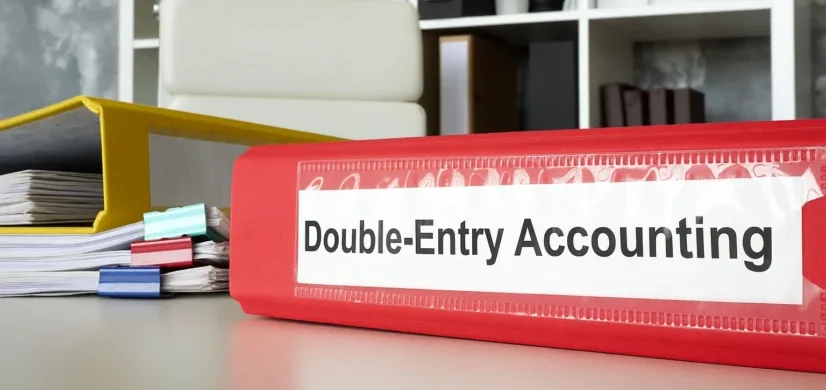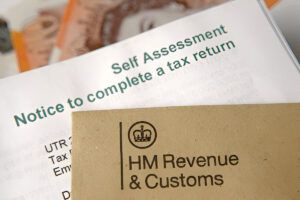
Double-Entry Bookkeeping: The Foundation of Every Reliable Account
Have you ever thought about how businesses manage their finances so precisely? A strong system is at work for every correct balance sheet and easy audit: double-entry bookkeeping. This method makes sure that every pound spent is recorded as a matching entry, which keeps financial records balanced and without mistakes.
If you’re running a startup or a family business, understanding this method can change how you handle your finances. Many chartered accountants in London UK trust double-entry bookkeeping to help clients stay financially transparent and compliant. Let’s see what it means, why it’s important, and how you can use it to improve your business finances.
What Is Double-Entry Bookkeeping?
Double-entry bookkeeping is key to precise accounting. It’s based on the idea that each financial move impacts two accounts: one debit and one credit. These entries keep your books balanced and give a full view of your business’s financial state.
Double-entry accounting offers a comprehensive and financially accurate assessment. It:
• Debits and credits must match, which helps identify errors early.
• Keeps track of not just cash but also assets, liabilities, and equity.
• Enables you to create cash flow reports, income statements, and balance sheets.
That’s why professional and experienced accounting firms in Canary Wharf use this system. It provides companies with a solid basis for long-term growth, tax compliance, and decision-making.
Key Components of Double-Entry Bookkeeping
In double-entry bookkeeping, each transaction is classified into one of the five primary categories, which are also referred to as the accounting pillars. Knowing these enables you to determine the proper location for each debit or credit:
• Assets: The possessions of your company. Examples include cash, equipment, vehicles, and inventory.
○ Debits increase assets, and credits decrease them.
• Liabilities: The money owed by your company to third parties, including loans and unpaid invoices.
○ Credits increase liabilities, and debits decrease them.
• Equity: the owner’s stake in the company after liabilities are deducted from assets.
○ Credits increase equity, and debits decrease it.
• Income (Revenue): The money received as a result of selling goods or rendering services.
○ Credits increase income, and debits decrease it.
• Expenses: The costs associated with operating your business, including salaries, utilities, and rent.
○ Debits increase expenses, and credits decrease them.
These five pillars are the base of double-entry bookkeeping. In order to maintain the balance and organization of your financial records, every transaction impacts at least two of these categories.
Debit (Dr):
A debit keeps track of the money that enters your company. It reduces income and liabilities while increasing assets and expenses.
Example: When you buy equipment for £1,000 in cash, you debit the Equipment account because your business has gained an asset.
Credit (Cr):
A credit log keeps track of the value that leaves your company. It lowers assets and expenses while raising liabilities and income.
Example: Since money has left your company, you credit the Cash account in the same transaction.
Debits and credits work together to keep your accounts balanced. The sum of the debits and credits must always be equal for each transaction.
The Accounting Equation
The foundation of double-entry bookkeeping is the accounting equation. It shows the connection between the assets and liabilities of your company and the owner’s remaining assets.
Assets = Liabilities + Equity
This equation must always stay in balance. For example:
Example 1: Taking a £5,000 Bank Loan
Cash (Asset) increases → Debit £5,000
Loan Payable (Liability) increases → Credit £5,000
The equation remains balanced because both sides increase by the same amount.
Example 2: Buying Equipment for £1,000 in Cash
Equipment (Asset) increases → Debit £1,000
Cash (Asset) decreases → Credit £1,000
Here, one asset goes up while another goes down, keeping total assets (and the equation) balanced.
Double-entry bookkeeping keeps your books balanced by logging each transaction as both a debit and a credit. This gives you a clear, correct view of your business’s financial standing. This system is widely used by chartered accountants in London UK, and trusted accountancy firms in Canary Wharf for maintaining transparency and precision in financial reporting.
This balance is also what allows accurate preparation of statutory accounts and smooth filing of corporation tax returns later.
Why Double-Entry Bookkeeping Matters
Double-entry bookkeeping is important because it ensures your financial records are accurate, balanced, and transparent. It’s important to know your company’s actual financial health rather than merely keeping track of numbers. Here’s why it matters so much:
• Ensures Accuracy and Balance
Since each transaction impacts two accounts, the total debits and credits are always equal. This fundamental balance guarantees that your books always reflect reality and helps you spot mistakes early.
• Gives a Complete Financial Picture
Double-entry accounting reveals the sources and destinations of money, in contrast to single-entry accounting, which only monitors cash flow. This makes it easier to understand the earnings, costs, and the total worth of your company.
• Simplifies Financial Reporting
The correct classification of each entry makes it easy to prepare reports such as the cash flow statement, income statement, and balance sheet. For lenders, investors, and tax authorities, these reports are essential.
• Helps Detect Errors and Fraud
You can be certain that something is incorrect if your books ever fail to balance. This keeps your records more reliable by making it simpler to identify errors or even indications of fraud.
• Builds Credibility and Compliance
Professionalism is demonstrated by using double-entry bookkeeping. Leading accounting firms prefer this approach because it complies with international accounting standards. It supports HMRC compliance and simplifies filing for VATand self-assessment. This greatly streamlines tax filings and company expansion.
For businesses growing quickly or handling employee wages, double-entry bookkeeping also integrates smoothly with payroll management, keeping track of salaries, tax deductions, and employer liabilities automatically. It offers the control and clarity required to make wise financial decisions and preserve stability over the long run.
Common Mistakes to Avoid
Even though double-entry bookkeeping is meant to maintain the balance of your accounts, errors can still occur, particularly if you’re handling your books by hand or lack the necessary knowledge. The following are some of the most typical mistakes to look out for:
• Mixing Up Debits and Credits
One of the most typical errors is recording entries on the incorrect side of the account. Always remember that debits raise assets and expenses, while credits increase liabilities, income, and equity.
• Missing One Side of a Transaction
Every transaction must have two entries of equal value: a debit and a credit. If you forget one side, the balance of your books will be immediately compromised.
• Using the Wrong Account
Posting a transaction to the incorrect area, such as recording an expense under assets, can affect your financial reports and result in incorrect tax filings.
• Ignoring Reconciliation
Not routinely comparing your accounts to bank statements or invoices can conceal mistakes and make it more difficult to identify duplicate or missing entries.
• Skipping Regular Reviews
The manual review process is crucial, even with accounting software. Having a chartered accountant in London, UK, or a trusted accounting firm in Canary Wharf check your books helps catch errors early and keeps everything compliant.
How Software Simplifies Things
Back then, double-entry bookkeeping meant lots of ledgers, journals, and hours spent writing things down. The majority of that is now handled for you by accounting software like Xero,QuickBooks, and Sage. Although the system records the debits and credits independently, these programmes still adhere to double-entry rules.
If you’re working with accounting firms, they probably use cloud-based software that automatically syncs transactions from your bank. This saves time and cuts down on mistakes. Even with these tools, knowing the basics can help you spot errors and talk to your accountant.
When Your Business Should Use Double-Entry Bookkeeping
When your business transactions get more frequent or complex, it’s time to use double-entry bookkeeping. This system is essential once you’re not just dealing with simple cash payments but are handling invoices, inventory, or loans.
It’s especially important when:
• You operate as a limited company or partnership and must maintain accurate financial records for compliance.
• You handle both income and expenses across multiple accounts.
• You plan to apply for loans, attract investors, or prepare detailed financial reports.
Small businesses often start with single-entry bookkeeping, but as they grow, double-entry offers the accuracy and structure needed for stability in the long run. Most accounting firms recommend it for any business that wants reliable, audit-ready accounts.
Why Work With Professionals
Although software can handle reports and entries, it takes experience to fully figure out your numbers. Having knowledgeable accountants on your team guarantees accurate, compliant, and insightful books. As your company expands, expert assistance enables you to go beyond simple bookkeeping by providing customised guidance to enhance cash flow, reduce expenses, and make confident plans.
Double-entry bookkeeping is more than just a procedure; it’s the foundation of your company’s financial transparency and reliability.
Get In Touch
Find Out More

Double-Entry Bookkeeping | The Foundation of Every Reliable Account
Double-Entry Bookkeeping: The Foundation of Every Reliable Account Have...

Taking Advantage of Deductions: A Self-Assessment Guide for Entrepreneurs
Taking Advantage of Deductions: A Self-Assessment Guide for Entrepreneurs...

Understanding IR35: What Contractors and Freelancers Need to Know
Understanding IR35: What Contractors and Freelancers Need to Know...

Service Package
Service Package Essential Services We essentially provide these Service...
